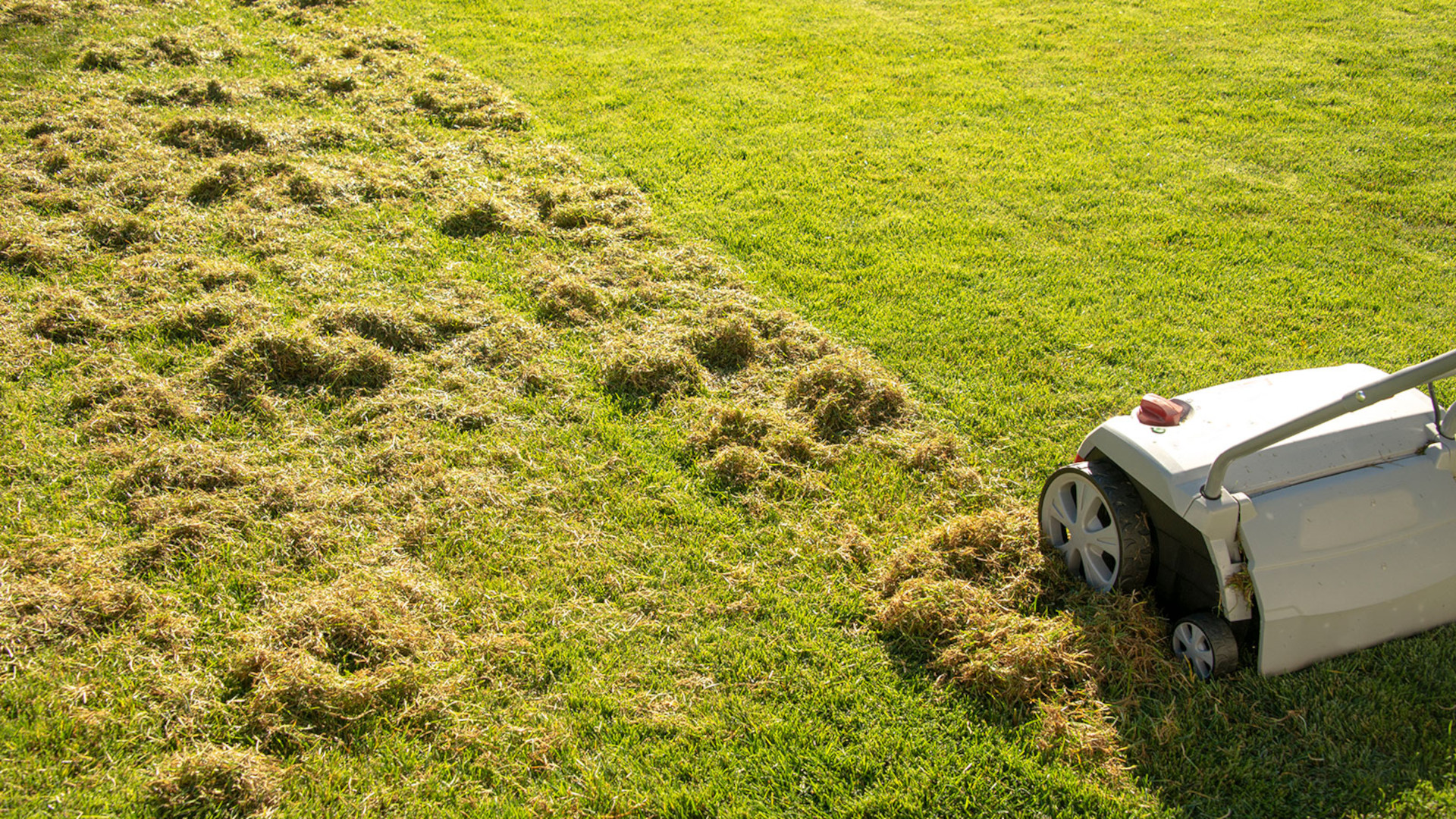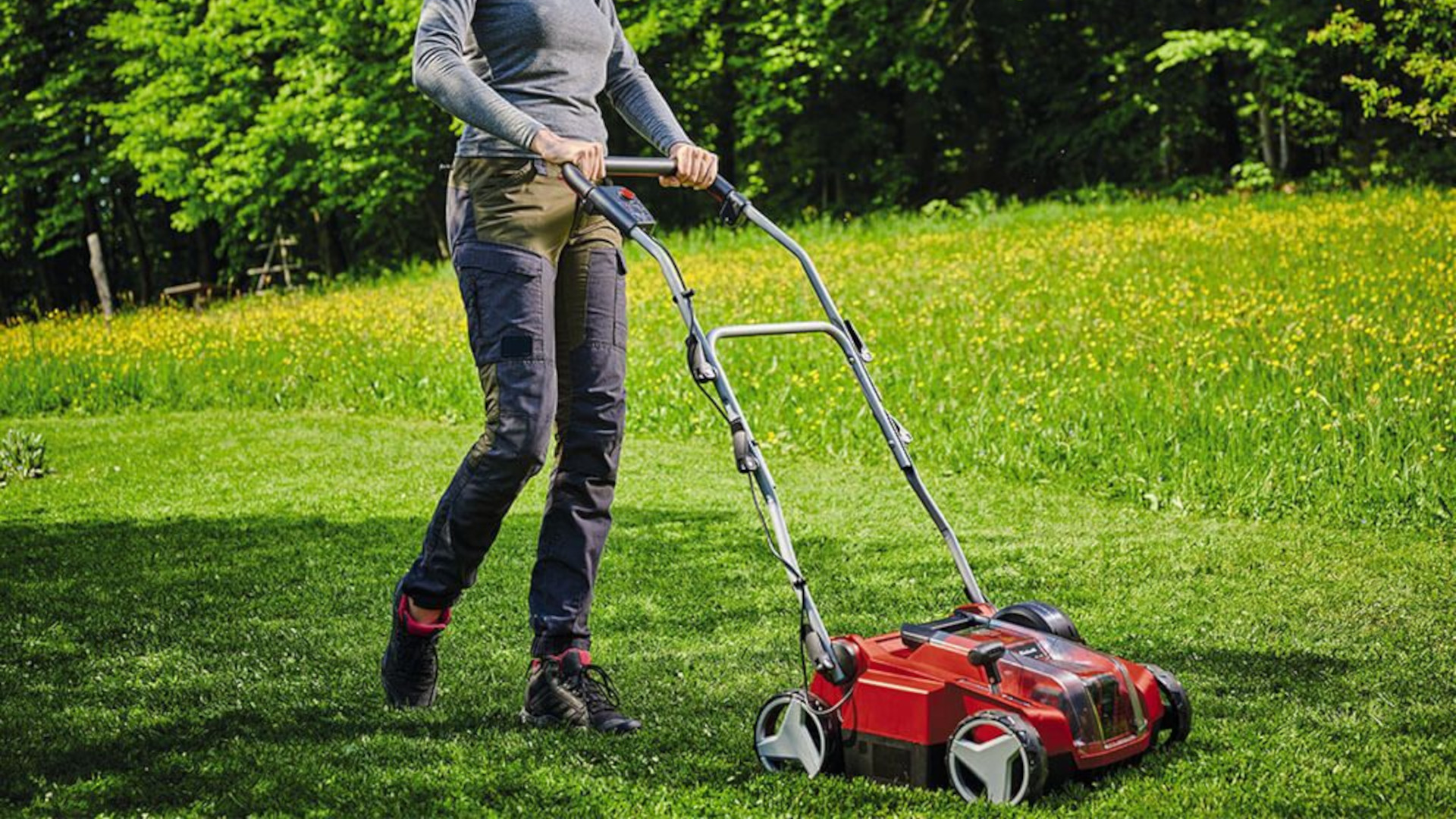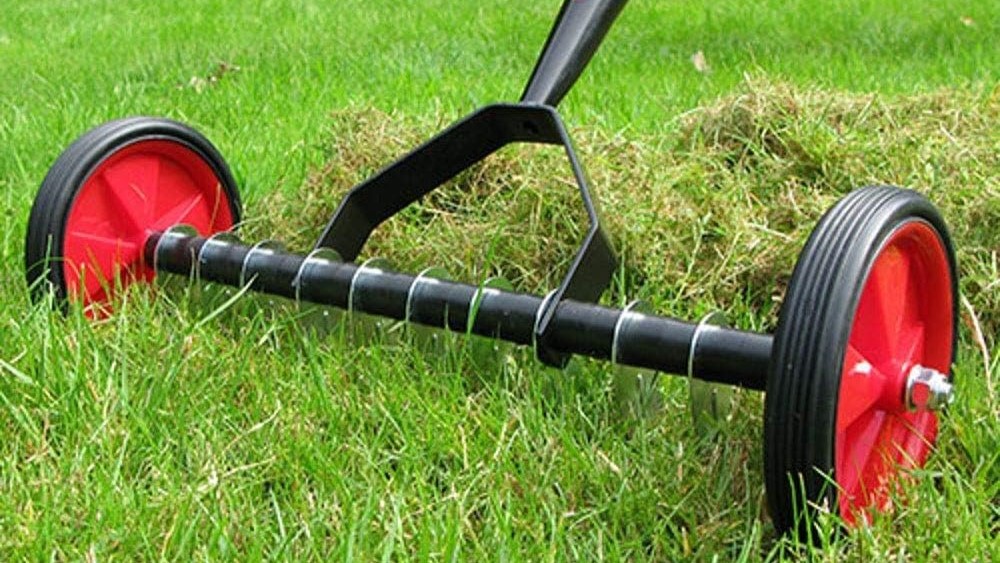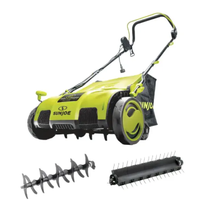So, you’ve got yourself a scarifier or scarifying rake, and you’re keen to use it to lift up all the moss, thatch, dead grass or weeds that are occupying your lawn.
Lawn scarification can certainly help restore a lawn to its best condition and create space for new grass seeds to germinate—but before you start, it’s crucial to check when is the best time to scarify.
This intensive treatment causes some collateral damage to the lawn, as you’ll dig up healthy grass at the same time as combating the lawn’s problems. The benefits of the process are maximized when you scarify at a suitable time of year—while scarifying at the wrong time can cause negative outcomes such as stunted regrowth.
In this guide, I’ll talk you through the best times of year for lawn scarification, flag up the times of year when you shouldn’t scarify, and list some signs to look out for that suggest a lawn could benefit from scarification. To make sure my advice is accurate, I interviewed two lawn experts to find out when exactly you should give yourself the green light for scarification—you’ll find their tips below.
When is the best time to scarify a lawn?
The ideal month or season for scarification will vary depending on factors including your local climate, current weather conditions, and the type of grass in your lawn.
As a rule, it’s best to scarify at a time of year when:
- There are several months of growing time ahead
- The grass is unlikely to be exposed to severe weather—such as frost or a heatwave— in the following weeks
- You won’t need to walk on the lawn very often in the following month
- Problem weeds in your area are not in their seeding phase (if you’re scarifying deeply)

David Hedges Gower has more than 40 years of lawn and turf experience. In 2004 he established his own successful lawn care company which he continues to run to this day. David is now the chairman of the recently established Lawn Association, and consults with the power tool brand Stiga as a lawn expert.
For the majority of our readers who live in colder regions such as the northern United States or the United Kingdom, the best times of year for scarification are around spring or early fall.
“March/April or September are the best months for routine maintenance scarification, especially if the grass is thin, in poor condition or has a lot of moss,” says David Hedges Gower, Chair of The Lawn Association.
“If summer is late or unusually wet you can sometimes push this to May. And if you are having an Indian Summer, push later to October.”
Meanwhile, readers who live in warmer regions such as the southern United States should aim to scarify during late spring or summer.
Related: When is the best time to prune?

When not to scarify a lawn
Scarifying a lawn is not recommended at any time when the grass is under severe stress or cannot regrow quickly.
For example, scarification is one of the things you should never do to your lawn in a heatwave. During an extended period of hot, dry weather, the grass plants that make up your lawn are under stress due to heat and dehydration, which will make it difficult to heal and regrow after scarification.
Similarly, during very cold or frosty weather, scarification can weaken grass at a time when it is unable to regrow, which might leave you with a bare-looking lawn until spring.
“If you scarify too late in the year this can leave you with open and muddy sward for many months,” David notes.
Signs that a lawn requires scarification
As well as choosing a certain time of year, you can watch for natural cues in the condition of your lawn to identify when it would benefit from scarification. These include:
- Bare patches
- Infestation by weeds
- Abundant growth of moss
- Waterlogging or poor drainage

Calum Maddock is a gardening expert at the home and garden advice provider, HomeHow.co.uk.
“There are a few obvious signs that a lawn could benefit from scarification,” says Calum Maddock, a gardening expert at home and garden advice provider, HomeHow.co.uk.
“Firstly, there might be a lot of yellowy-brown patches or you might be able to see a thick mat of dead grass, moss and weeds under the tips of the grass. Secondly, your lawn might be holding a lot of water on the surface after it rains.”
On the other hand, if your grass looks lush, thick and healthy, there’s less urgency to scarify. However, some experts still advise doing light-touch ‘maintenance scarification’ once or twice per year—even if a lawn looks in good shape.
“Many gardeners only think of scarifying when they see a lot of moss, but by then they are firefighting the problem that has been allowed to take over,” says David.
“The clever approach is to control the thatch in order to make it harder for moss to take over in the first place.
“Scarification is always a good idea, as it encourages regrowth and renewed thickening of grass during warm weather, gives you much more control over thatch and moss, and helps your lawn to thicken up by reviving the shoots and stolons,” he adds.

FAQs
What should you do after scarifying your lawn?
Scarification is a stressful procedure for grass plants, just as pruning can be stressful for plants. However, you can ensure a fast recovery by taking appropriate steps following the process.
After scarifying, it’s a good idea to overseed the lawn with fresh grass seed, so that new growth can replace the grass that’s been dug up by the scarifier. (The existing grass will hopefully spread into the space, too.) You should also water the grass to rehydrate it, and feed it with a fertilizer such as Scotts Natural Lawn Food ($33.97, Amazon) to encourage strong regrowth.
Another thing you should do after scarifying is try to avoid walking on the grass! Low footfall will help the lawn regrow in the weeks and months following scarification.
When should you dethatch a lawn instead of scarifying it?
When comparing dethatching vs scarification, it's similar process but it’s somewhat less intensive, and tends to cause less collateral damage.
In the dethatching process, a tool called a dethatcher (like the Greenworks 14in Cordless Dethatcher and Scarifier) is used to remove mostly the thatch layer of your lawn, which is dead or dying plant matter, just underneath the visible part of the grass plant. Unlike scarification, dethatching should not greatly affect the roots of the grass. Many gardeners would consider dethatching to be the more appropriate remedy for a lawn that is only moderately affected by moss, weeds or thatch build up.
Some gardeners prefer dethatching to scarification, full stop, as it’s a relatively gentle process that does less damage. Dethatching can be done at similar times of year to scarification, and under similar weather or climatic conditions.
Should scarification make a lawn look better?
Scarification can enhance the appearance of a lawn by removing weeds and improving the health of the grass. However, the lawn may appear bare for several weeks or months after scarification, as the grass will need time to regrow.
“Done once or twice a year, at the right time, scarification does benefit the growth and strength of a lawn,” says Calum.
“Although your lawn might look worse immediately after doing it, you should soon notice a boost in its health and appearance. If you want to feed, reseed and top dress your lawn, it’s important to carry out scarifying and aerating first to enable your lawn to absorb nutrients and organic matter.”


